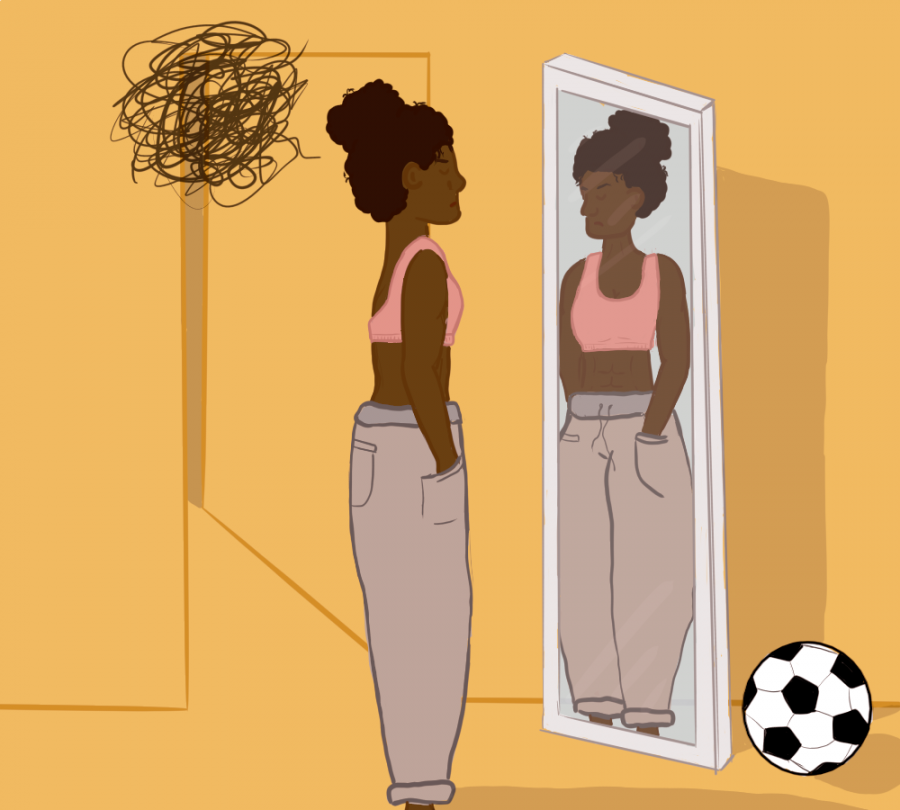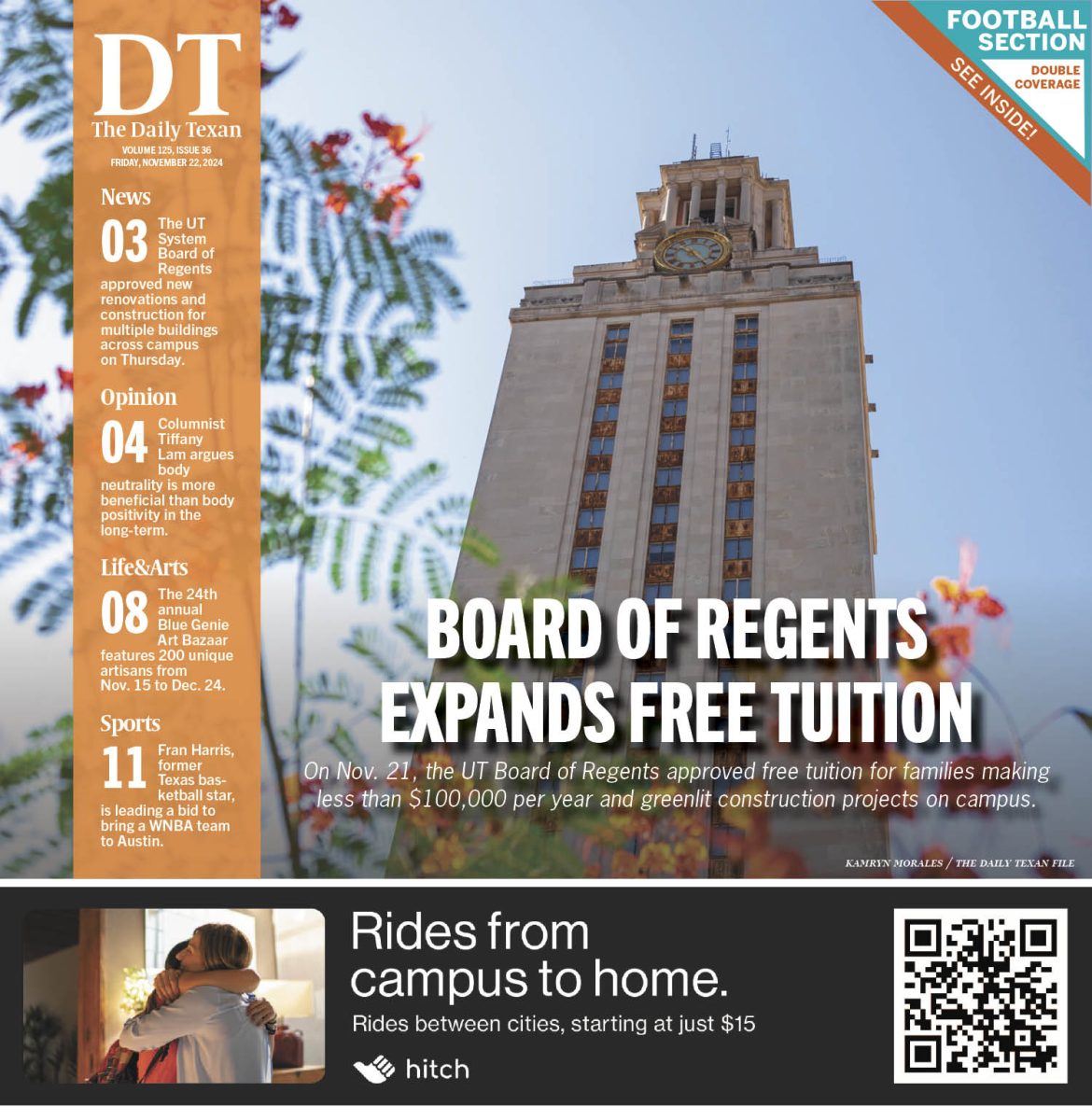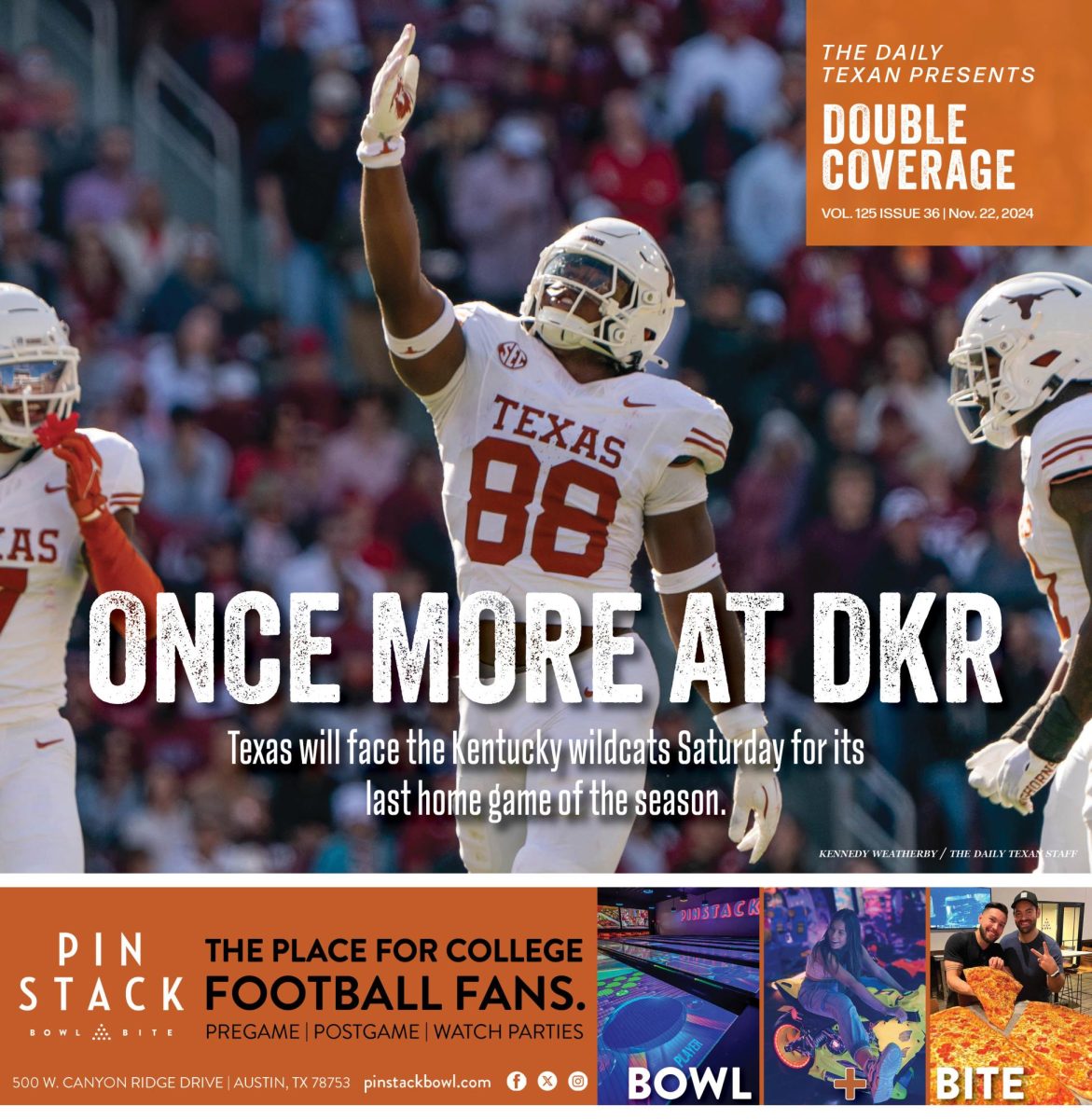Student athletes discuss relationship with body image
December 4, 2021
Dazzled by bright lights, sparkly costumes and gravity-defying tricks, 8-year-old Priscila Khan stepped up to the mat and tumbled into her first-ever competitive cheerleading routine. After three years of training, many teammates took special notice of her athletic physique, especially her abs — a rare feat for a sixth grader.
“There was a period of time where I would look in the mirror every day and try to see if I could see my abs,” Khan said. “It would freak me out when I couldn’t.”
Young athletes — many of whom spend hours exercising and building muscle — often spend more time studying their bodies than their peers. As a result, many athletes form complicated relationships with body image and diet early in life.
Khan, a plan II junior, competed in cheerleading throughout middle and high school. However, she said the sport brought on body image issues as early as her preteen years.
“When I was little, I was always a flyer because I was small,” Khan said. “I was always at the top — it was easy to throw me around. When I grew up, … (other girls) on the same team as me (were) chosen as the flyers because they’re smaller. For a while, (I thought), ‘Why can’t I just be smaller? Maybe if I was skinnier (or a) lighter weight, they’d still use me as a flyer?’”
When Khan arrived at UT, she retired her pom poms and cheer uniforms and joined the Texas gymnastics team. However, she said the pressure to fit a specific body type remains just as prevalent in gymnastics.
“If you’re too tall, your center of gravity is off and you can’t do beam,” Khan said. “If you’re too bulky — have too much muscle — you’re going to be heavier on bars. It’s a lot harder to be able to accomplish a lot of (gymnastic skills) if you don’t have that very short stature.”
As a powerlifter for the past seven years, accounting senior Joshua Costo said many of his body image issues stemmed from comparison with others in his sport.
“(There are) people who were in my weight class who had significant off-seasons and looked phenomenal, but were also really strong,” Costo said. “It can definitely hurt your own body image. When I deleted or stopped looking at social media very often, that kind of body image issue went away. I knew it wasn’t realistic.”
With hundreds of eyes on her during volleyball games, sociology sophomore Nalani Iosia said she felt vulnerable — body consciousness interfered with her ability to focus on the game.
“Are people paying attention to me, really closely?” Iosia said. “When I go back to serve there’s people sitting right behind me and next to me. What are they looking at specifically? … There’s always eyes on us wherever we play.”
College athletes must often change their diet to fit the demands of high-level physical conditioning. Iosia said the dietary changes she made as a collegiate volleyball player felt like a loss of control over her body.
“Before I got (to college), I probably didn’t eat as many carbs because I knew they make you gain more weight,” Iosia said. “But our nutritionist made it clear that you need carbs in your body to be able to perform. They helped me perform, but it made me feel disgusted inside my own body.”
She undertook a high-carb diet to increase her in-game strength and power, but Iosia didn’t realize the toll the diet took on her self esteem until her freshman season ended. Now in her second volleyball season, Iosia said she realized one diet can’t cater to every athlete. This year, she took her nutrition into her own hands.
“It’s a battle getting to know your body and what fuels it and what doesn’t,” Iosia said. “I’ve been working with our nutritionist … what foods I can fuel to feel better on the court but also feel better about myself at the same time.”







